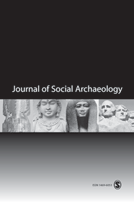Miners and Mistresses: Middle Kingdom mining on the margins

Expeditions to procure gemstones from mines in Egypt’s marginal territories during the Middle Kingdom (c. 2055-1650 BC) are generally perceived as representing centralized, bureaucratized and hierarchical missions to essentially monopolized resources. Traditional ‘top-down’ approaches to the social context of mining in this period assume the pivotal role of the state in controlling such endeavours through large-scale centrally organised expeditions, as deduced from the epigraphic record. This paper advances a ‘bottom-up’ approach to gemstone mining in the Middle Kingdom by the deployment of cross-cultural and cross-level theories in social archaeology to micro-level production data at three key mining sites in Egypt’s marginal territories. Strategies of engagement and negotiation at local levels to get access to a local labour force and the source, rather than monopolization and state controlled procurement, are forwarded as significant aspects of Middle Kingdom gemstone mining outside the Nile Valley. Feminine imagery at gemstone mines may have constituted a ritual and symbolic device to foster solidarity and cohesion amongst a local labour force in Egypt’s marginal zones.
Bloxam, E. 2006. Miners and Mistresses: Middle Kingdom mining on the margins. Journal of Social Archaeology, 6, (2) pp. 277-303. A pdf of this article is available either from the author or from Sage Publications: https://journals.sagepub.com/doi/pdf/10.1177/1469605306064244